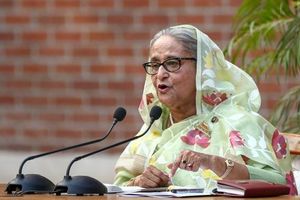Virtual reality (VR) rehabilitation is paving the way for innovative approaches to helping frail older adults improve their physical capabilities, according to recent findings from Egypt. The study, conducted by researchers at Mansoura University, demonstrates significant improvements among participants who engaged with VR exercises, effectively addressing the challenges of frailty, which affects many older adults as they age.
The rapid increase of the older population worldwide has emphasized the importance of maintaining health and independence. Frailty, characterized by diminished physiological reserve and increased vulnerability to stressors, can lead to severe health risks and escalated healthcare costs. The study involved 70 prefrail or frail older adults living within three urban areas of Dakahlia governorate, evaluated through rigorous methodologies over several months.
The VR rehabilitation program utilized the Nintendo Wii Fit Plus, integrating aspects of gaming with physical activity to encourage movement and participation. Over the duration of the study, participants exhibited significant enhancements across various physical performance metrics, with improvement noted especially in frailty criteria such as standing balance and gait speed. Prior to the intervention, both the experimental and control groups registered comparable scores; yet post-intervention, the experimental group showed statistically significant advancements, with frailty index scores decreasing from 2.88 to 1.40.
This innovative combination of gaming and exercise appears to have effectively motivated participants, offering them not only physical benefits but also psychological reassurance, as observed through reductions in the fear of falling. Fear of falling is common among older adults and can deter them from engaging in physical activity, thereby exacerbting frailty. The authors noted, "We observed significant improvements in the intervention group...,” highlighting the comprehensive benefits of the VR experience.
Background research underlines the potential of exercise to counteract frailty, but the inclusion of VR provides unique supplementation to conventional methods. The study reflects broader global concerns, as the elderly population is expected to reach unprecedented levels, necessitating effective intervention strategies to support their well-being. Notably, the research emphasizes the accessibility of home-based rehabilitation, making it more feasible for elderly individuals to engage without the need for extensive travel or resources.
Highlighted findings led to enhanced physical performance scores across the board for those using the VR program, contrasting sharply with the control group, where outcomes remained stable or even declined. The effectiveness of these VR interventions aligns with the growing body of literature advocating for innovative approaches to encourage older adults to stay active. The study's results are consistent with other research, as the authors stated, "the development and dissemination of exergames for use at home may broaden the variety of options and activities accessible to senior citizens.”
The overall effectiveness of this approach indicates not just the benefits of physical rehabilitation but also the importance of integrating technology to engage and motivate older adults to lead healthier lives. Through positive outcomes such as increased mobility, improved balance, and reduced fear of falling, the study suggests adopting VR as a standard extension of rehabilitation practices for older populations.
These results lead to recommendations for healthcare providers to explore VR methodologies as viable options for enhancing care for frail older adults. Given the study's success, the prospects of developing more personalized VR interventions geared toward individual capabilities may provide additional layers of motivation and effectiveness.
The research faced some limitations, including its localized nature and small sample size, which could affect the generalizability of findings. Future studies should aim to encompass broader demographics and explore the efficacy of VR across various healthcare settings and conditions.
Overall, the significance of this study lies not only within its results but also as part of the wider dialogue of geriatric healthcare reform, showcasing how technology can facilitate old-age rehabilitation, thereby encouraging sustained health, independence, and quality of life well beyond traditional paradigms.



